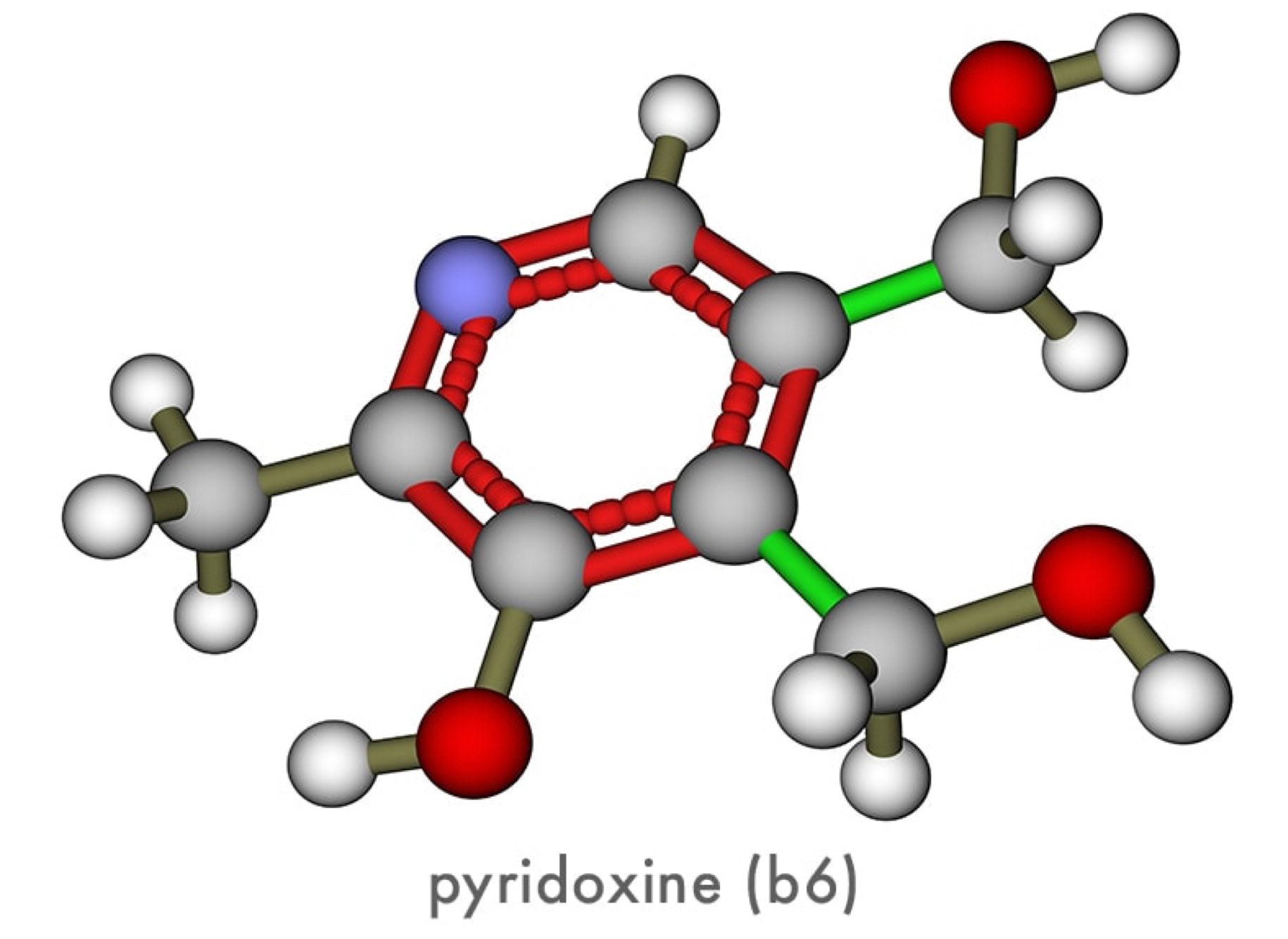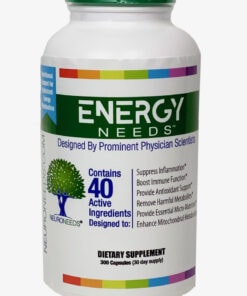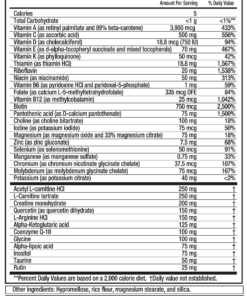Pyridoxine (also known as vitamin B6, one form of which is pyridoxal-5-phosphate – PLP)
Pyridoxine in EnergyNeeds®
 Pyridoxine is added in order to provide a wide basis of nutrition, especially given the important role of pyridoxine in energy metabolism. It is unclear whether the inactivated or activated (PLP) form of pyridoxine is preferred, and thus the EnergyNeeds® product contains both forms in equal amounts. Very-high doses of pyridoxine are often advocated in autism, a use that is based on some studies, and thus is present in some autism-targeted products, including SpectrumNeeds®. However, anecdotally, a minority of people have hyperactivity-related symptoms associated with this high dosing of pyridoxine. Thus, EnergyNeeds® contains pyridoxine at about the RDA (Recommended Daily Allowance by the USA FDA), without these high levels. Side effects are unexpected.
Pyridoxine is added in order to provide a wide basis of nutrition, especially given the important role of pyridoxine in energy metabolism. It is unclear whether the inactivated or activated (PLP) form of pyridoxine is preferred, and thus the EnergyNeeds® product contains both forms in equal amounts. Very-high doses of pyridoxine are often advocated in autism, a use that is based on some studies, and thus is present in some autism-targeted products, including SpectrumNeeds®. However, anecdotally, a minority of people have hyperactivity-related symptoms associated with this high dosing of pyridoxine. Thus, EnergyNeeds® contains pyridoxine at about the RDA (Recommended Daily Allowance by the USA FDA), without these high levels. Side effects are unexpected.
The Details
What Is Pyridoxine?
Pyridoxine, also known as vitamin B6, is one of the eight B-complex vitamins. Pyridoxine cannot be manufactured by humans and is thus a true vitamin, obtained exclusively from the diet.
What Does Pyridoxine Do?
The active form of pyridoxine, pyridoxal 5-phosphate (PLP), serves as an enzyme cofactor in over 100 enzyme reactions in carbohydrate, lipid, and amino acid metabolism. PLP is also involved in neurotransmitter, myelin, hemoglobin synthesis, and gene expression.
What Does a Pyridoxine Deficiency Appear As?
Deficiency is generally found in individuals with highly-restricted diets and/or substantial gastrointestinal disease. Symptoms can include weakness, fatigue, depression, seizures, peripheral neuropathy, vomiting, anemia, and cardiovascular disease including stroke.
What About Pyridoxine‘s Use in Disease?
Pyridoxine is sometimes recommended for Alzheimer disease, attention deficit-hyperactivity disorder (ADHD), autism, Down syndrome, diabetes and related nerve pain, sickle cell anemia, migraine headaches, asthma, carpal tunnel syndrome, night leg cramps, muscle cramps, arthritis, allergies, acne and various other skin conditions, and infertility. It is also used for dizziness, motion sickness, preventing the eye disease age-related macular degeneration, seizures, convulsions due to fever, and movement disorders (tardive dyskinesia, hyperkinesis, chorea). Some people use pyridoxine for boosting the immune system, eye infections, bladder infections, preventing cancer and kidney stones, increasing appetite, and helping people remember dreams.
What Form of Pyridoxine is Best?
Most supplements contain inactivated pyridoxine, but some sources suggest that the activated (pyridoxal-5-phosphate, abbreviated as PLP) form is better. Studies are few, and the answer is not clear.
What Are the Common and/or Important Side Effects of Pyridoxine?
Pyridoxine is a water-soluble vitamin and thus considered to be generally non-toxic. Side effects are rare at usual doses used in supplementation.
Is There Any Laboratory Testing for Pyridoxine Deficiency?
Laboratory testing can reveal the presence of a deficiency of this nutrient, but is generally not likely to have clinically utility.
What About Additional Dosing Beyond EnergyNeeds®?
Individuals with neurodevelopmental disorders such as autism may want to discuss with their physician supplementing with higher doses of pyridoxine than is present in EnergyNeeds®. This can be accomplished by adding a separate B6 product, or switching to SpectrumNeeds®
Order EnergyNeeds® Today
Formulations


